Category: Perugini Projects
Monument, Architects: Nello Aprile, Cino Calcaprina, Aldo Cardelli, Mario Fiorentino, Giuseppe Perugini; Mirko Basadella, Francesco Coccia (sculptures)

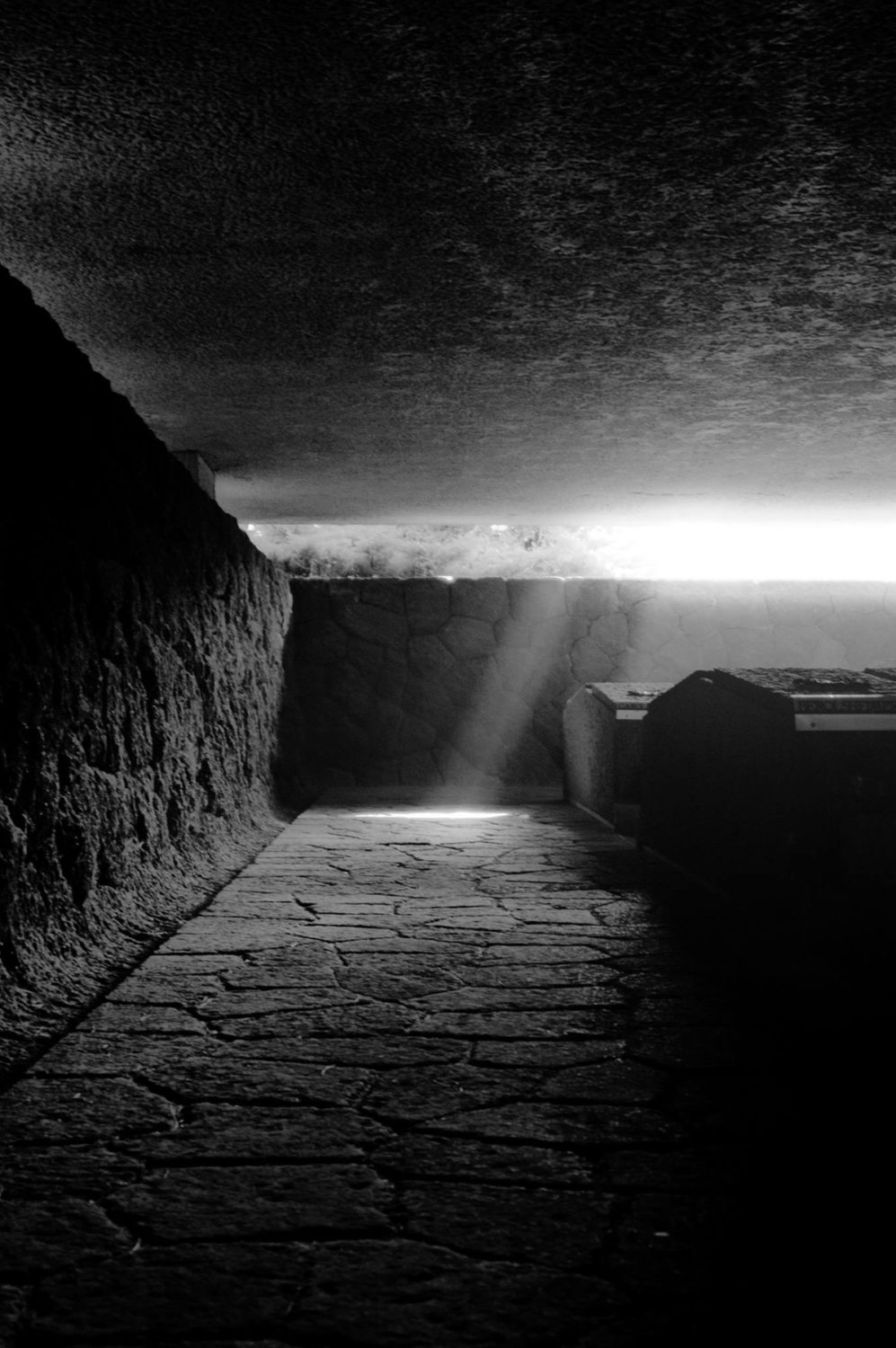
(Images from HERE)
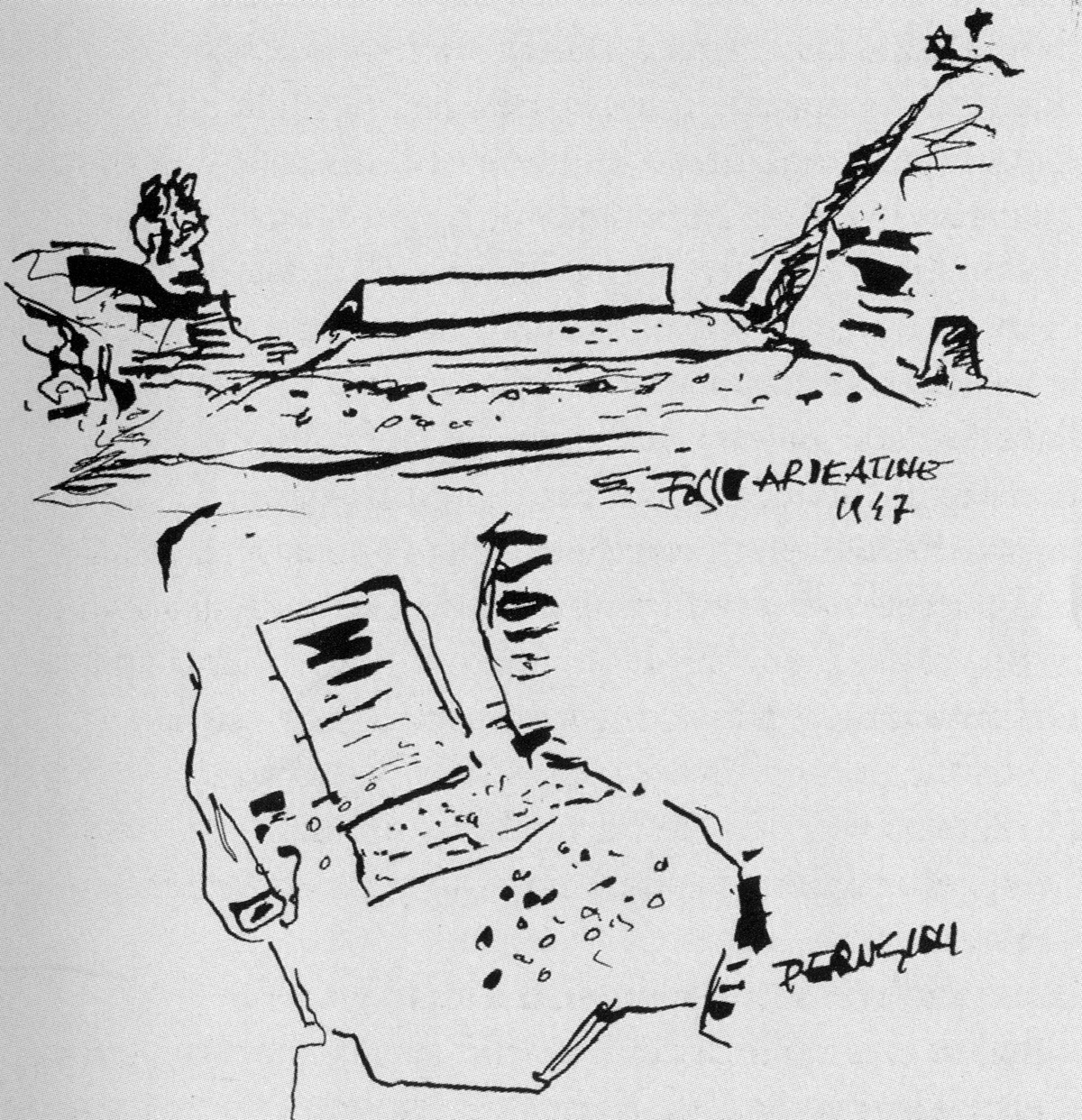
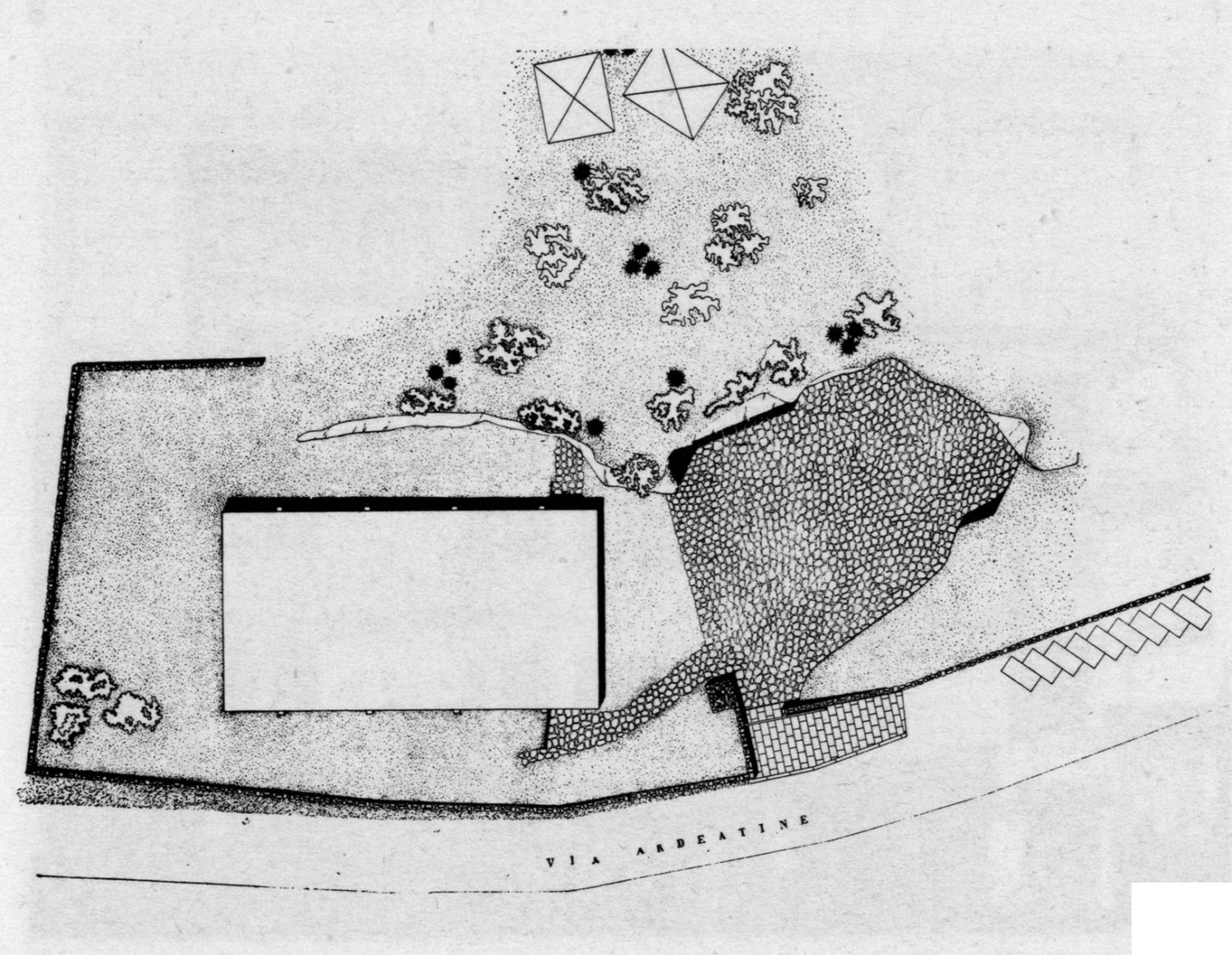
Adrian Forty: Concrete and Memory
‘The second memorial to consider is in Rome, at the Fosse Ardeatine, about two kilometres along the Appian Way, close to some of the Roman catacombs.
The memorial contains the graves of 335 Italians shot by the Germans on 24 March 1944, in reprisal for a partisan attack on an SS column in Rome, killing thirty-three Germans. Hitler himself ordered that ten Italians were to die within 24 hours for every dead German, and the local SS commander, Major Karl Hass, in his haste to carry out the order took the required number, plus an additional five, at random from those who were being held in prisons and police stations in Rome, although none of these were connected with the attack, nor were necessarily even partisans. The victims were taken to an abandoned pozzolana mine at the relatively remote Fosse Ardeatine, shot, and the caves dynamited to create a rock fall to conceal the bodies. Shortly after the German withdrawal from Rome on 4 June 1944, the site of the massacre was discovered, and excavated, and the bodies put in coffins, but left in the caves. In September 1944, while parts of Italy were still under fascist control, a competition was held for a memorial, and two designs were chosen. The two winning teams of architects were invited to collaborate to produce a final scheme, and it was this scheme, under the leadership of Mario Fiorentino and Giuseppe Perugini, that was built, and inaugurated on 24 March 1949, five years after the massacre.
From the start, there was controversy about the memorial. The relatives of the victims wanted the bodies to be left in the caves; but the caves were unstable, and lacked the monumental presence felt necessary to
commemorate not just the victims but also the event for posterity. The solution was to create a covered mausoleum connected to the caves, and which would be entered through the caves. The mausoleum consists of a shallow excavation, about 1.5m below ground level, containing the tombs of the 335 victims, covered by a single, monolithic slab, 48.5m by 26.65m, and 3 metres high, supported at only six points. Beneath is a dark cavernous space about 2 metres high, compressed beneath the enormous, almost unsupported slab and lit by a light coming through the narrow slit between it and the ground. The slit increases in height from 60cm at the entrance side, to 110cm on the side away from the entrance, an optical correction to make the slit appear an equal size all the way around. The soffit of the slab, though it appears flat, in fact curves upwards by almost 1 metre, so as to counteract the illusion such a large surface would give of bowing downwards. The soffit is sprayed with a rough concrete finish giving it the same appearance as the pick-hammered exterior finish of the outside of the slab, and making it seem that the slab is indeed a solid monolith. Seen from outside, the mausoleum is a thick unbroken slab that seems to hover above the ground. Apparently solid, it is in fact hollow, a concrete box with internal beams and trusses. Its outside surface is a thick concrete render applied to the concrete walls, and finished by pick-hammering to expose the Brescia brecca aggregate. What is therefore presented to the eye appears as a single stone, a stone so large and heavy as could never in reality have been quarried. In other words, concrete achieves what could never have been achieved with real stone; not only was no slab of this size possible in real stone, but also, if the concrete box had been clad in stone, there would have been joints, and these would have created questions about the means of support. Instead, here concrete goes beyond nature, and improves on anything that could be achieved with natural materials. It is important to see concrete being used here not as a substitute for natural materials, but as Josef Petry had written in 1913, a material whose beauty lay in its artificiality; but more than that, concrete here gives rise to emotions and sensations that could never be aroused by stone. At the Fosse Ardeatine, concrete is not a substitute for stone as a monumental material, it is superior to stone.
The Fosse Ardeatine is the major architectural production of the immediate post-war years in Italy, and indeed its genesis occurred even before the war had ended. The massacre was widely regarded as marking the birth of republican consciousness: it is a founding event in the history of the post- war Italian Republic, and moreover, because it occurred in Rome, helped establish Rome as the place of the Republic’s origin. (And the explicitly Roman features of the mausoleum, where as Tafuri puts it ‘geometry compromises with matter’,helped emphasise Rome’s claim in this regard). The memorial is loaded therefore with political significance, and indeed is still visited by parties of Italian schoolchildren learning their martyrology. Aldo Aymonino writing in 1998 comments, ‘The end result provided the newborn republic with one of the only two national monuments that the country has been able to produce over the last fifty years’ (the other being, in the author’s view, the Autostrada del Sole).
And like the Autostrada, the Fosse Ardeatine is made of concrete. The choice of concrete was, as already explained, partly for aesthetic reasons, but also had political connotations. First of all, it is a reaction to the ‘imperial’ imagery of the monuments of Mussolini’s Italy:
compared to the invariable classical references of these, the Fosse Ardeatine is modernist in its muteness and absence of iconographical symbols (though there is a socialist realist sculpture standing next to it, a feature that was deplored by critics then and since)Instead, all the iconography is in the materials.
Second, in the context of Italy in the 1940s, concrete was not a ‘cheap’, nor a surrogate material; as the material of reconstruction, then in short supply, to expend so much concrete on a memorial was, at this date, an act of sacrifice. And, third, although Mussolini’s memorials were invariably made of stone, fascist Italy had been an enthusiastic and creative user of concrete. Import restrictions encouraged Italian engineers, most famously Pier
Luigi Nervi, to produce some of the most innovative structures of the time, and even more than in Germany, concrete was the material that demonstrated the technological progressivism of the state. Another indication of how concrete was valued in fascist Italy is the curious ‘shrine’ in the Casa del Fascio at Como – in the office of the Party Secretary, a section of a free-standing column was left as raw concrete, and encased with a glass cabinet in which various fascist memorabilia were displayed. At the Casa del Fascio, the concrete skeleton was entirely covered by other materials, except here, in the inner sanctum, where it was exposed as if it were itself a religious relic.
If concrete in Italy was a fascist material, one of the tasks of post-war Italian architecture was to decontaminate concrete of its fascist connotations. In fact, the process had already begun before the war had ended, for the Germans had as they retreated blown up all the ingenious concrete lattice structure aircraft hangars that Nervi had built for the Italian airforce in the late 1930s. This act of destruction, which Nervi always mentioned whenever he referred to the hangars after 1944, conveniently liberated concrete, allowing it to become the material of the new republic.
The Fosse Ardeatine is the first of the post-1945 ‘empty-box’ memorials, a type that has been repeated fairly regularly since – for example, the Yad Labanim memorial in Tel Aviv (1963–64). The oppressive concrete slab hovering over a void has also been repeated, at among others the Yad Vashem memorial in Jerusalem (1953), and the Resistance memorial at Udine in Italy (1959–69). But because big slabs and empty boxes have become
familiar motifs of memorials, we should not assume that they, or concrete itself, are ‘natural’ signifiers of memory. At the Fosse Ardeatine, it was a very conscious and deliberate choice, concerned with producing an object that was free of the symbolism of the previous regime, and exploiting the material of reconstruction to create something that was more than could be achieved in any natural material. We cannot assume that the conditions that applied at the Fosse Ardeatine would also apply elsewhere, or that they could be relied on to evoke the same meanings. Nonetheless, the choice of material in both this case, and the next, contributed to the habituation of concrete as a material of memory.”
This excerpt was published In Mark Crinson, Urban Memory, 2005
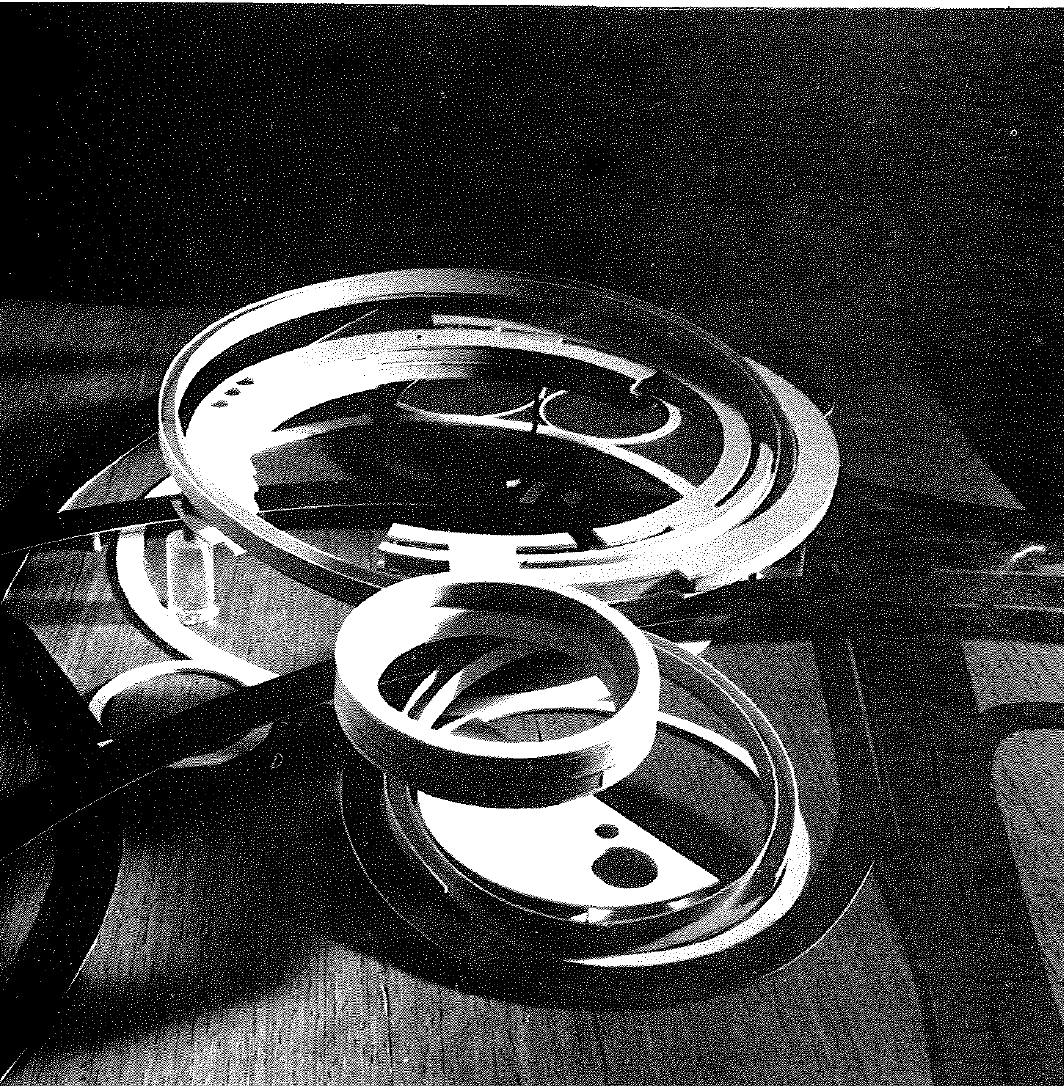
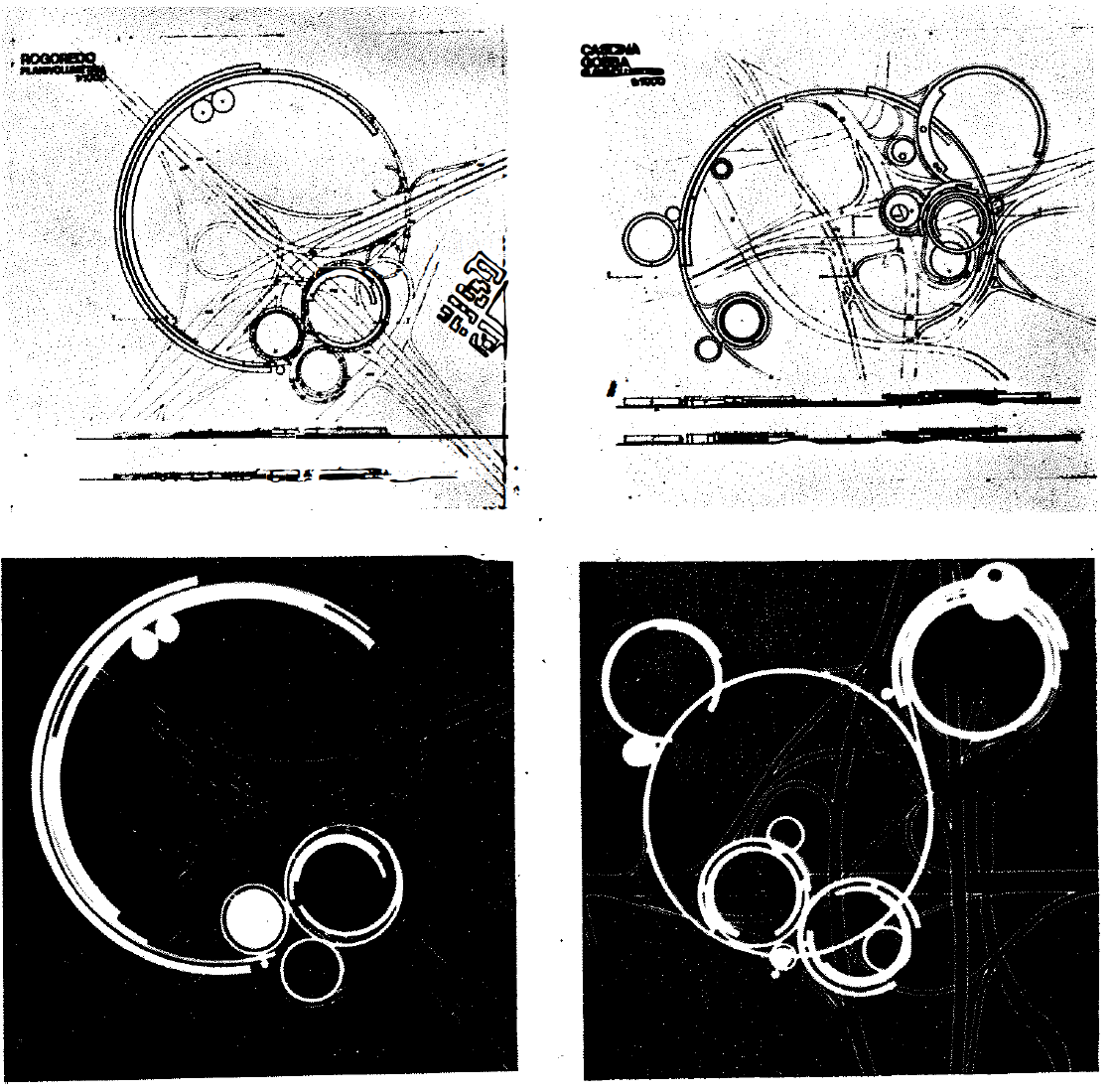
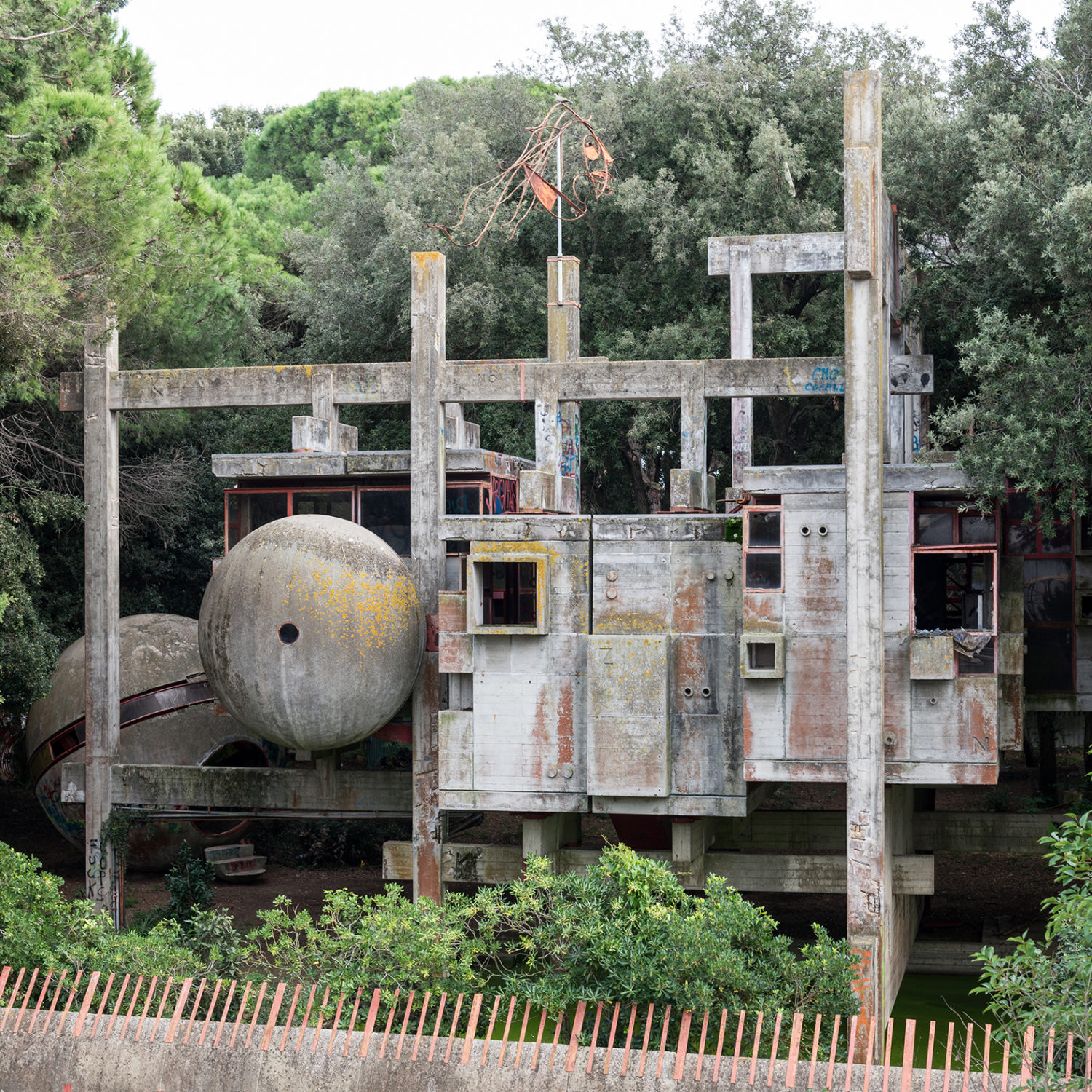
The Casa Sperimentale – A Chronicle of Experimentation
Architects experiment – it is in their nature. Some push what is possible, what is accepted and what is rational to their limit. Some experiments result in success, others fail. The Casa Sperimentale is one of these amazing built experiments. Surprisingly largely unknown to the architectural community it has been never published. It is seen as an example of experimental brutalist architecture that deserves to be listed alongside projects including the Barbican, the National Theatre in London and the Banco di Londra in Buenos Aires. But it isn’t born out of a Brutalist mindset – actually it is exactly the opposite: It is a refined structure, created as the result of a democratic process, designed along with ideas of an organic architecture. Yes, it is made of concrete but please do not call it Brutalist, you are not doing it any justice.
Today it slowly deteriorates, being broken into, vandalised, covered in graffiti, used as a track for urban parkour, it’s a well known Instagram spot, an illegal party location, there are myths about it, and sadly might soon be beyond repair and lost forever.
Our research is uncovering and documenting the story of designing, building and living in this extraordinary structure. For the last five years, we are working on documenting and taking part in an effort to rescue this amazing piece of architecture.
The Italian architect Giuseppe Perugini, together with his wife Uga de Plaissant and their son Raynaldo embarked on a journey to build a summer house in Fregene, a coastal suburb of Rome. In 1968 they started the construction of their Casa Sperimentale – the Experimental House – now also known as Casa Albero – the Treehouse. The house was conceived as an experimental living environment in which the boundaries between the composition of space and the construction methods were pushed to the very limits.
Working with a local builder they worked over the years to translate ideas developed by working with early computing in architecture and their interest in the baroque architect Borromini, their interest in an organic architecture, research into pre-fabrication, pottery (for the making of the concrete shells) into one building. Working only from sketches with no actual construction drawings the building was developed as a step by step organic process.
At the Casa Sperimentale, the Peruginis experimented with a series of concrete cube elements and precast spheres hung off a concrete superstructure. The living spaces were separated, de-composed and re-composed into a three-dimensional grid. All the concrete elements are defined and separated through narrow panels of glass in the walls, floors and ceilings offering glimpses of the supporting structure and the surrounding site. Floors and walls are seemingly floating. Taking reference from Borromini’s San Carlo – one of the research interests of the architect, the walls are formed as a series of niches and cupboards set into the concrete. No plans were made of this arrangement. A series of concrete elements were cast on-site and then assembled like a kit of parts making decisions as they went along. All the walls are individual concrete elements that are exchangeable.
The main living areas are accessed via a steel staircase and are organised over two main levels meandering upwards to the roof terrace. All the surrounding walls are penetrated by a series of openings, cast concrete storage cupboards and suspended concrete spheres containing the bathrooms.
The site is surrounded by a curved concrete fence. In front of the building is a spherical orb the Palla – an observatory looking back to the house. This has been cast in the sand deposits of the site and extracted from the earth.
After the death of the parents the house became abandoned in the late-1990s, with the guest buildings on site been inaccessible since 1985.
Today there is a growing curiosity in the house and its history but so far very little research has been undertaken to document the building and to uncover it’s (hi)story. We are very fortunate to be working with the family of Giuseppe Perugini to document the building and uncover parts of its history.
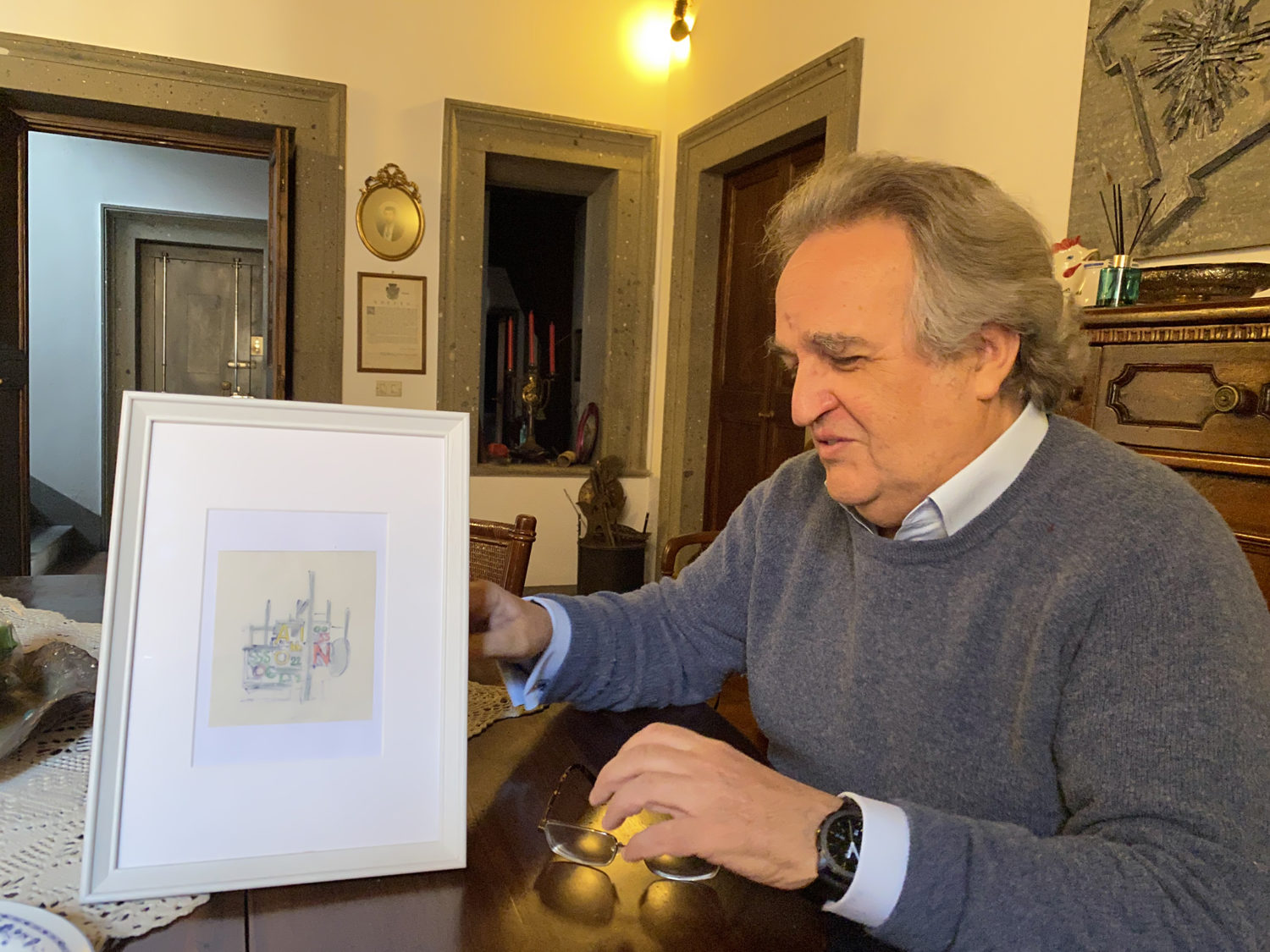
Raynaldo Perugini showing us some of the sketches from the archive, April 2020.
We discovered the Casa Sperimentale in the same way we find stuff nowadays – on the web. Coming across an image of the structure we haven’t seen before made us curious. After more than five years of visiting, cutting away the trees, researching in archives, listening to stories and making connections we feel ready to share our findings on this new website.
Our jounrey with the Casa has only begun.
Sabine Storp + Patrick Weber, London July 2020